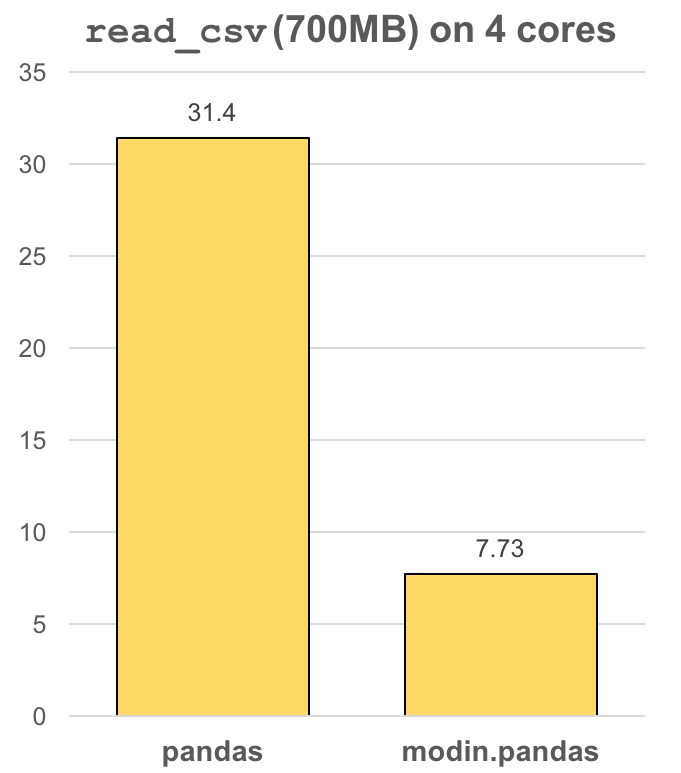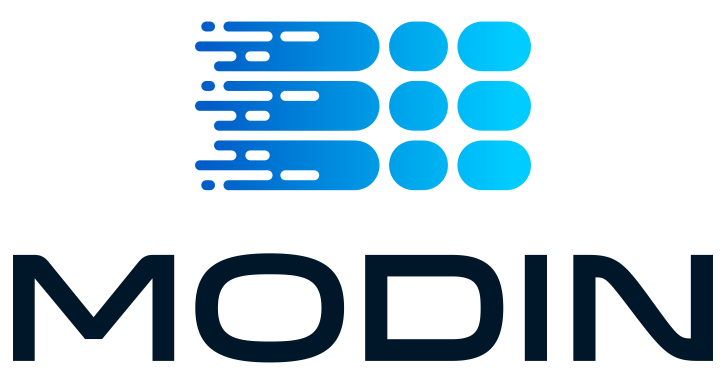
To use Modin, replace the pandas import:

Scale your pandas workflow by changing a single line of code#
Modin uses Ray, Dask or Unidist to provide an effortless way to speed up your pandas notebooks, scripts, and libraries. Unlike other distributed DataFrame libraries, Modin provides seamless integration and compatibility with existing pandas code. Even using the DataFrame constructor is identical.
import modin.pandas as pd
import numpy as np
frame_data = np.random.randint(0, 100, size=(2**10, 2**8))
df = pd.DataFrame(frame_data)
It is not necessary to know in advance the available hardware resources in order to use Modin. Additionally, it is not necessary to specify how to distribute or place data. Modin acts as a drop-in replacement for pandas, which means that you can continue using your previous pandas notebooks, unchanged, while experiencing a considerable speedup thanks to Modin, even on a single machine. Once you’ve changed your import statement, you’re ready to use Modin just like you would pandas.
Installation and choosing your compute engine#
Modin can be installed from PyPI:
pip install modin
If you don’t have Ray, Dask or Unidist installed, you will need to install Modin with one of the targets:
pip install "modin[ray]" # Install Modin dependencies and Ray to run on Ray
pip install "modin[dask]" # Install Modin dependencies and Dask to run on Dask
pip install "modin[mpi]" # Install Modin dependencies and MPI to run on MPI through unidist
pip install "modin[all]" # Install all of the above
Modin will automatically detect which engine you have installed and use that for scheduling computation!
If you want to choose a specific compute engine to run on, you can set the environment
variable MODIN_ENGINE and Modin will do computation with that engine:
export MODIN_ENGINE=ray # Modin will use Ray
export MODIN_ENGINE=dask # Modin will use Dask
export MODIN_ENGINE=unidist # Modin will use Unidist
If you want to choose the Unidist engine, you should set the additional environment
variable UNIDIST_BACKEND, because currently Modin only supports MPI through unidist:
export UNIDIST_BACKEND=mpi # Unidist will use MPI backend
This can also be done within a notebook/interpreter before you import Modin:
import os
os.environ["MODIN_ENGINE"] = "ray" # Modin will use Ray
os.environ["MODIN_ENGINE"] = "dask" # Modin will use Dask
os.environ["MODIN_ENGINE"] = "unidist" # Modin will use Unidist
os.environ["UNIDIST_BACKEND"] = "mpi" # Unidist will use MPI backend
import modin.pandas as pd
Faster pandas, even on your laptop#

The modin.pandas DataFrame is an extremely light-weight parallel DataFrame. Modin
transparently distributes the data and computation so that all you need to do is
continue using the pandas API as you were before installing Modin. Unlike other parallel
DataFrame systems, Modin is an extremely light-weight, robust DataFrame. Because it is so
light-weight, Modin provides speed-ups of up to 4x on a laptop with 4 physical cores.
In pandas, you are only able to use one core at a time when you are doing computation of
any kind. With Modin, you are able to use all of the CPU cores on your machine. Even in
read_csv, we see large gains by efficiently distributing the work across your entire
machine.
import modin.pandas as pd
df = pd.read_csv("my_dataset.csv")
Modin is a DataFrame for datasets from 1MB to 1TB+#
We have focused heavily on bridging the solutions between DataFrames for small data (e.g. pandas) and large data. Often data scientists require different tools for doing the same thing on different sizes of data. The DataFrame solutions that exist for 1MB do not scale to 1TB+, and the overheads of the solutions for 1TB+ are too costly for datasets in the 1KB range. With Modin, because of its light-weight, robust, and scalable nature, you get a fast DataFrame at 1MB and 1TB+.
Modin is currently under active development. Requests and contributions are welcome!
If you are interested in learning more about Modin, please check out the Getting Started guide then refer to the Developer Documentation section, where you can find system architecture, internal implementation details, and other useful information. Also check out the Github to view open issues and make contributions.
